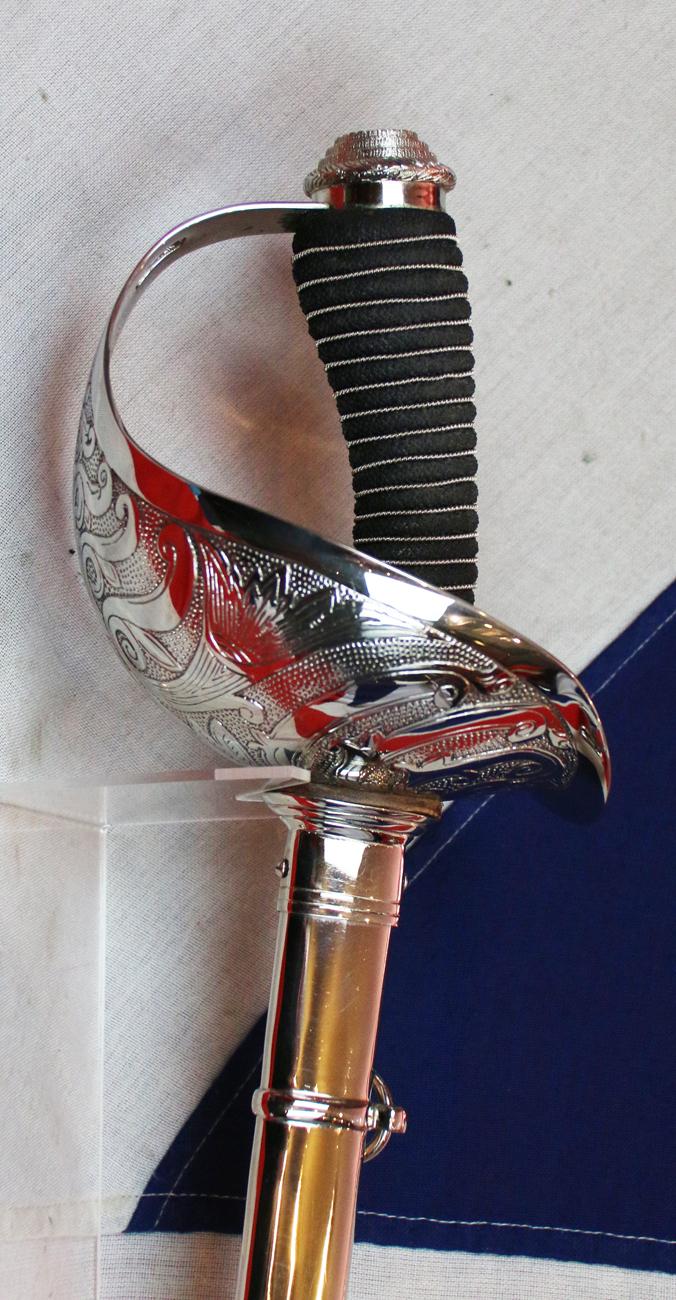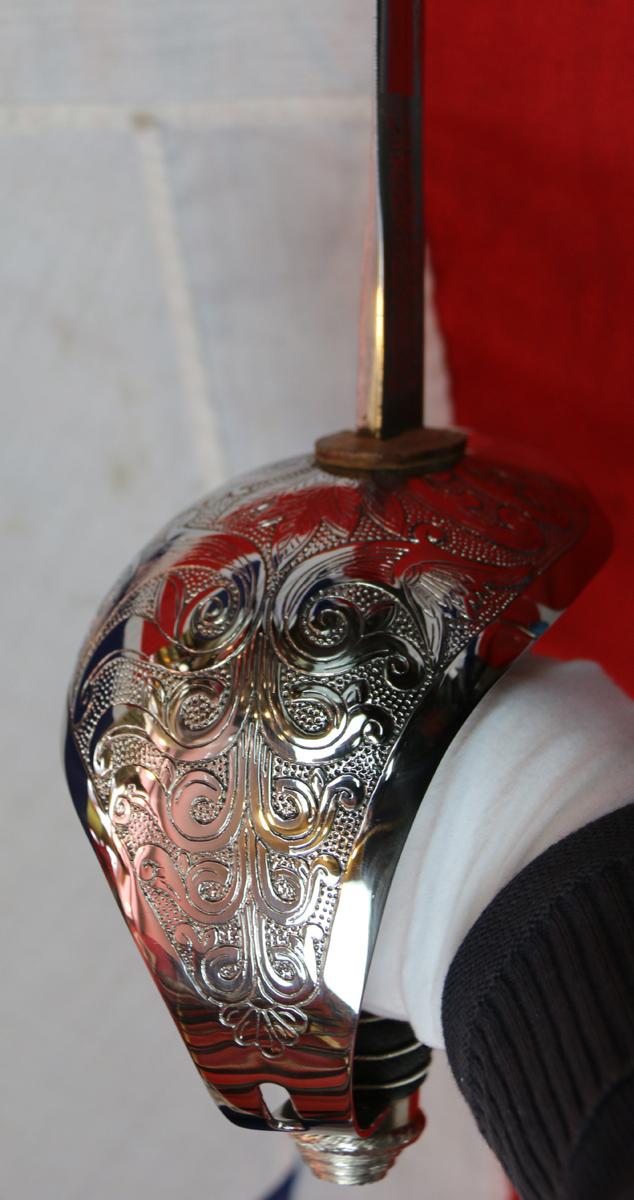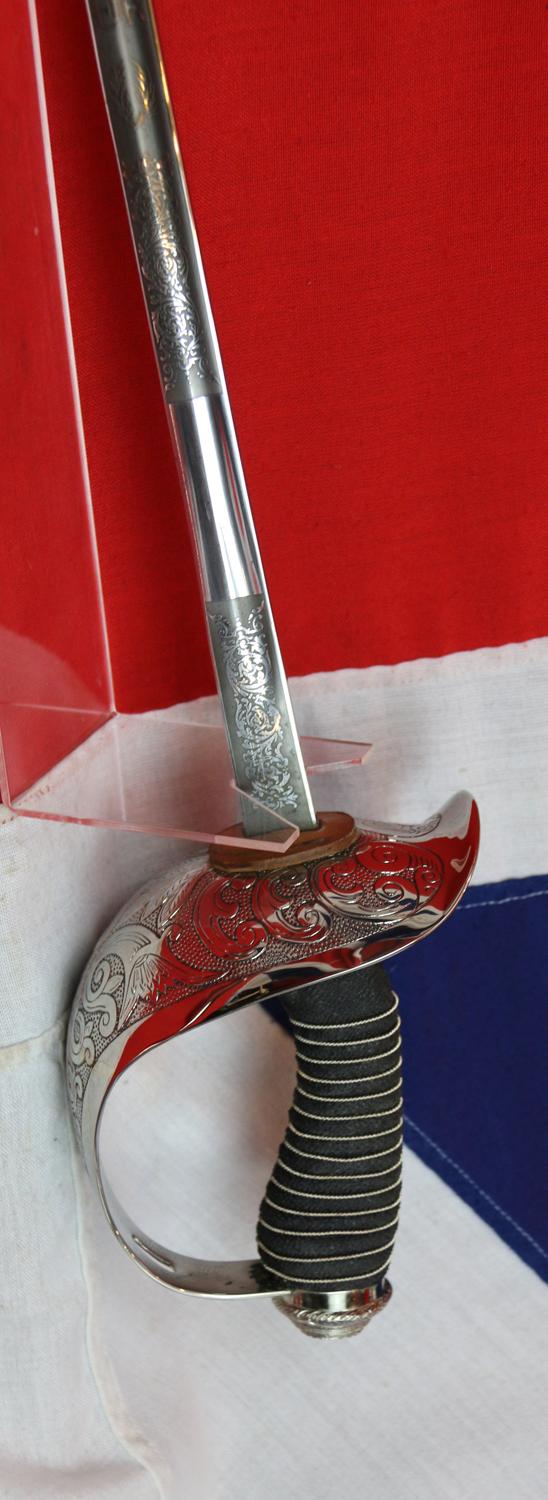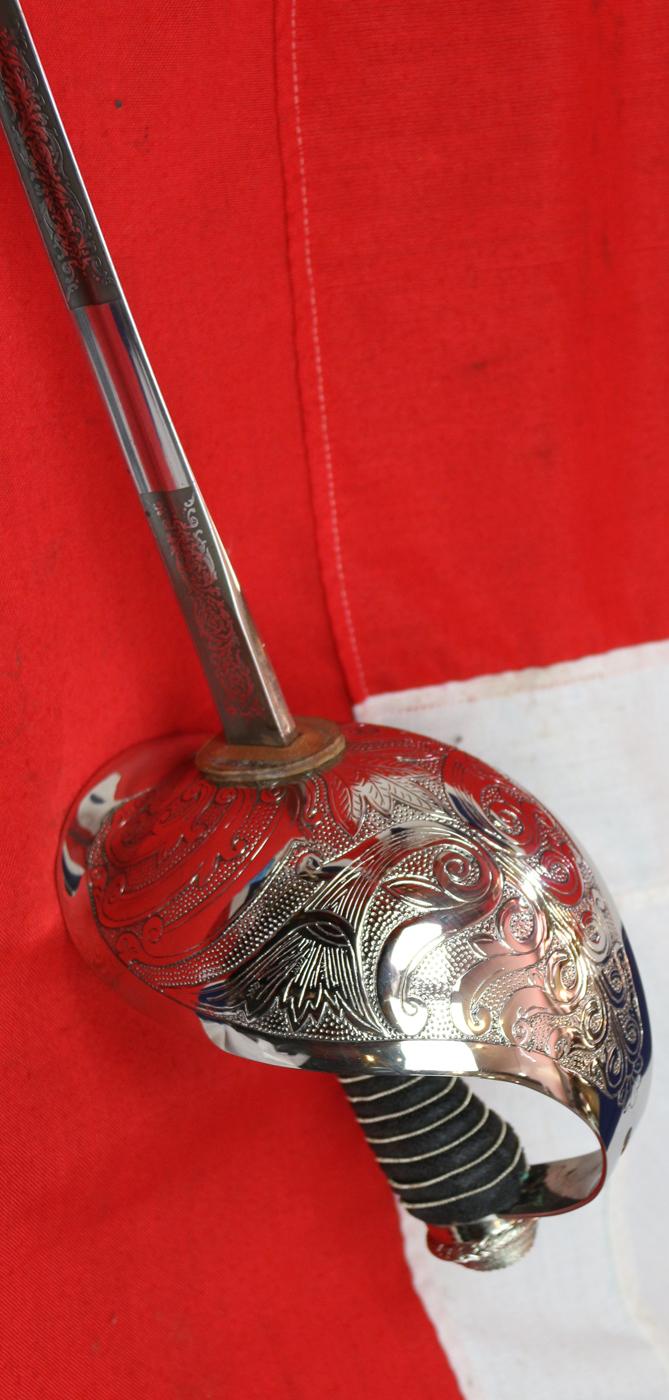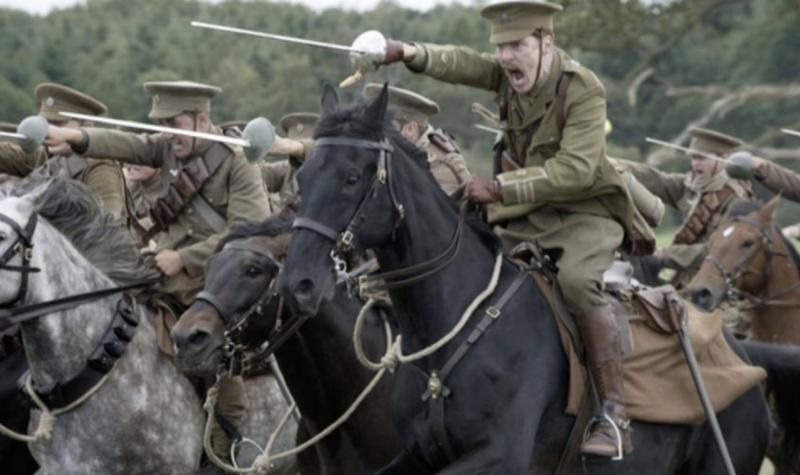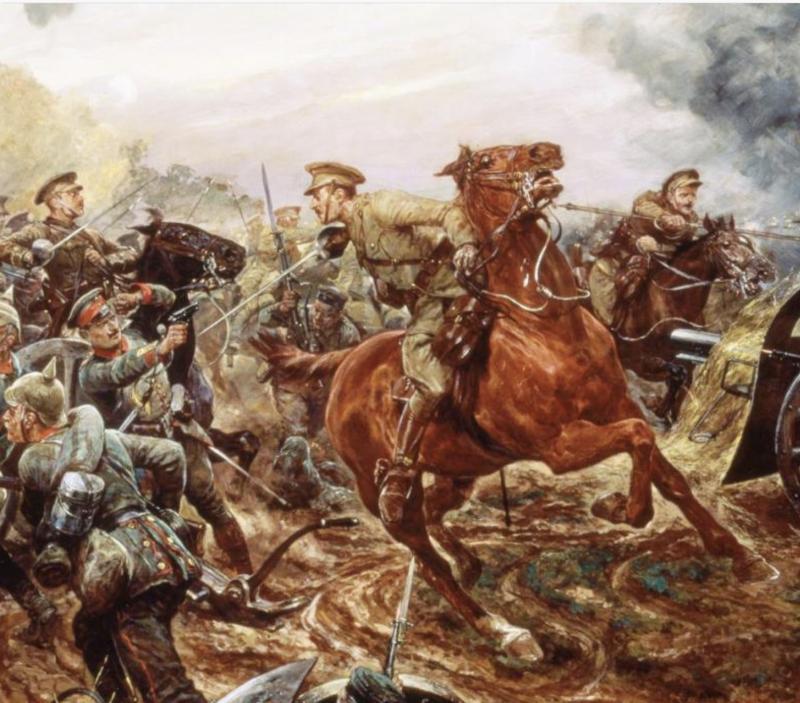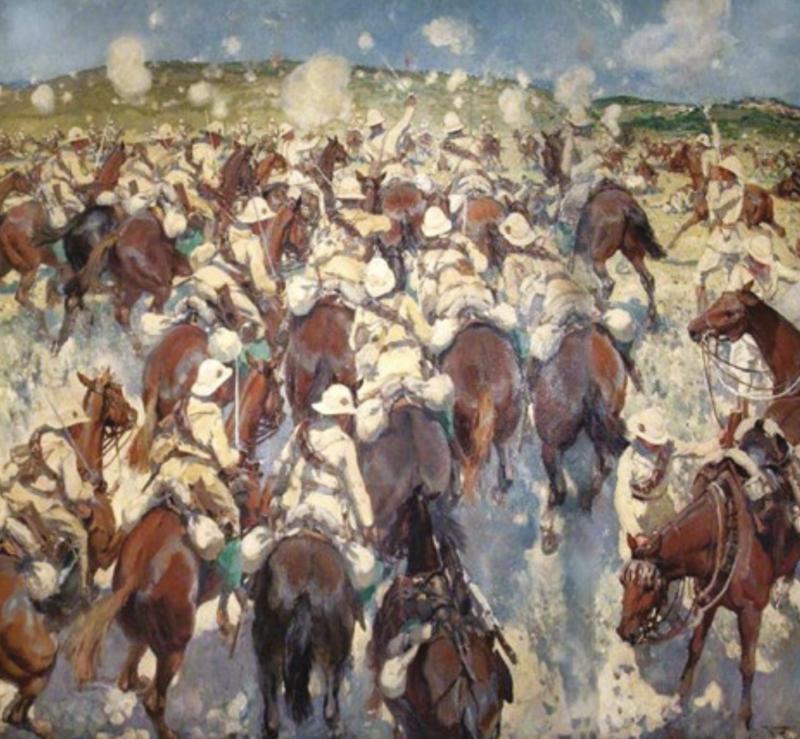A Near Mint Vintage ERII 1912 Pattern British Cavalry Officer's Sword. Horseguards Parade Ground Ready. Ideal For Current Regulation Use Today. One of the Most Beautiful Swords Ever Used, Yet Still In Service By British Cavalry Officer’s
Commissioned after 1953 in the reign of Queen Elizabeth IInd. Mint bright finish throughout with mirror bright etched blade with all its original counter frosting finish. Near mint condition full dress steel and plate scabbard. Fully engraved hilt bowl with its original sharkskin and multiwire bound grip. The 1908 Pattern Cavalry Trooper's Sword was the last service sword issued to the cavalry of the British Army. It is widely considered the most effective cavalry sword ever designed, although ironically its introduction occurred as swords finally became obsolete as military weapons. The 1912 Pattern Cavalry Sword was introduced for officers, who had previously carried privately purchased non-regulation swords. The 1912 Pattern Sword was essentially the same look as the 1908 trooper’s Pattern but featured more hilt decoration. The trooper’s version also had a hardened rubber grip, the officer's wire bound sharkskin. It is mounted in its original nickle plated dress scabbard
This was the pattern of sword that was used in WW1 by all officers of the British cavalry, and for example, such as an officer in such as the 9th lancers.
The 9th Lancers regiment landed in France as part of the 2nd Cavalry Brigade in the 1st Cavalry Division in August 1914 for service on the Western Front. Captain Francis Grenfell was awarded the Victoria Cross for his actions in saving the guns of 119th Battery, Royal Field Artillery on 24 August 1914 (he was later killed in action on 24 May 1915, as was his twin brother, Riversdale, a yeomanry officer who attached to 9th Lancers). The regiment then participated in the final "lance on lance" action involving British cavalry of the First World War; on 7 September 1914 at Montcel à Frétoy in which Lieutenant Colonel David Campbell led a charge of two troops of B Squadron and overthrew a squadron of the Prussian Dragoons of the Guard.
The charge of the 6th Mounted Brigade at El Mughar in Palestine on 13 November 1917 can claim to be the last great British cavalry charge although there were later charges in Syria in 1918 by an Indian regiment and by the Australian Light Horse.
Significantly, James Prinsep Beadle was commissioned to paint the charge at El Mughar as the cavalry contribution to a representative collection of Great War studies for the United Services Club in Pall Mall. Never previously exhibited outside of the building, which now houses the Institute of Directors, Beadle’s painting depicts ‘B’ Squadron of the 1/1st Royal Bucks Hussars leading the charge against the Ottoman Turkish defenders. The regiment was commanded by Lieutenant Colonel the Hon. Fred Cripps, later Lord Parmoor. The charge, which also featured the 1/1st Dorset Yeomanry with the 1/1st Berkshire Yeomanry in support, was described by General Sir George Barrow as ‘a complete answer to the critics of the mounted arm’.
Picture 10 in the gallery is ‘The Last Charge at El Mughar’ by Thomas Dugdale {painted in 1920}
34 3/4 inch long blade
Code: 25727


